Then & There: The Notting Hill Hippodrome Steeplechase
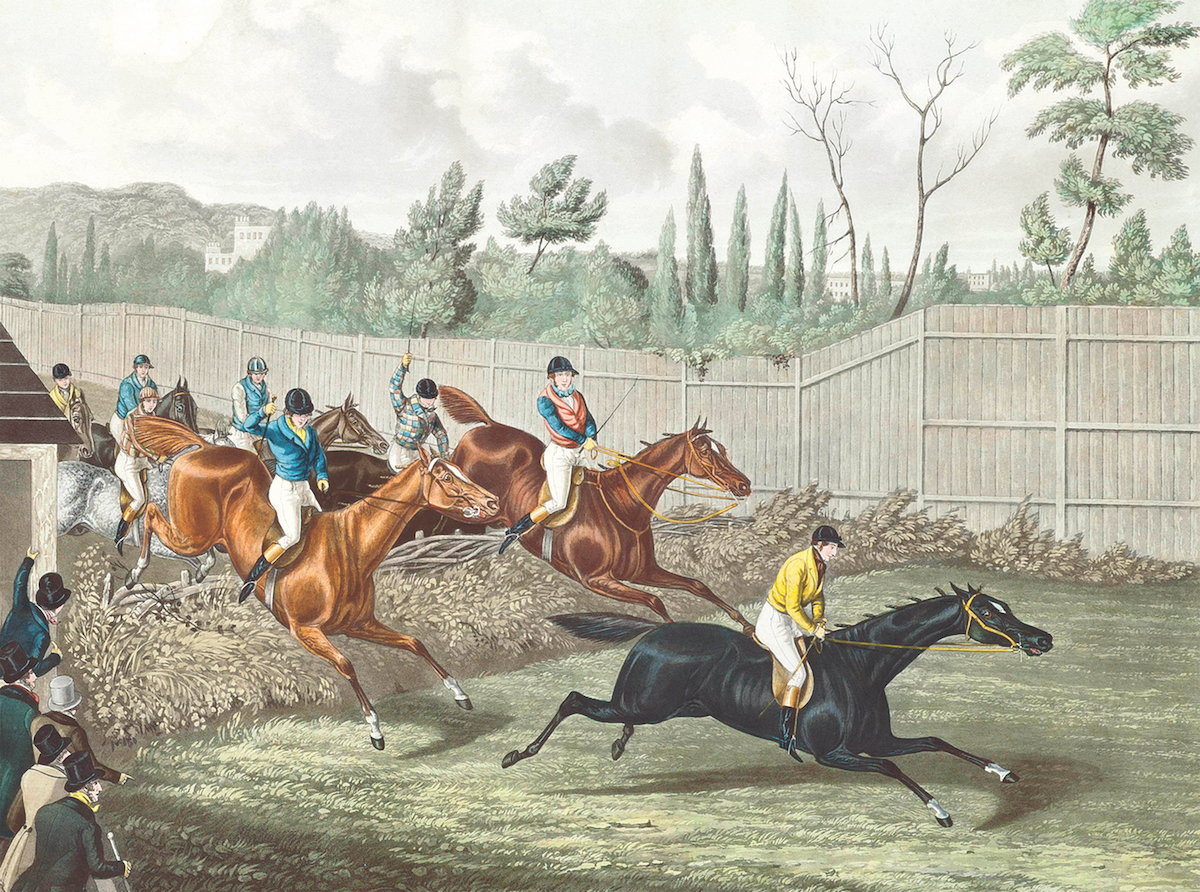
Story and photos by Richard Hooper
In 1837, when the Notting Hill Hippodrome held its inaugural day of racing, the area in London it was named for looked very different from today. Kensington Palace was about three-quarters of a mile east and south, but the area of Notting Hill, other than along the main road, had very few structures of consequence. Along one side of what would become the racecourse were Pottery Lane and The Potteries, named for a local industry.
Containing some of the poorest housing in London, it was also known as the Piggeries, comprising 250 or so dilapidated dwellings set on a section of eight acres, with a pig population triple that of people.
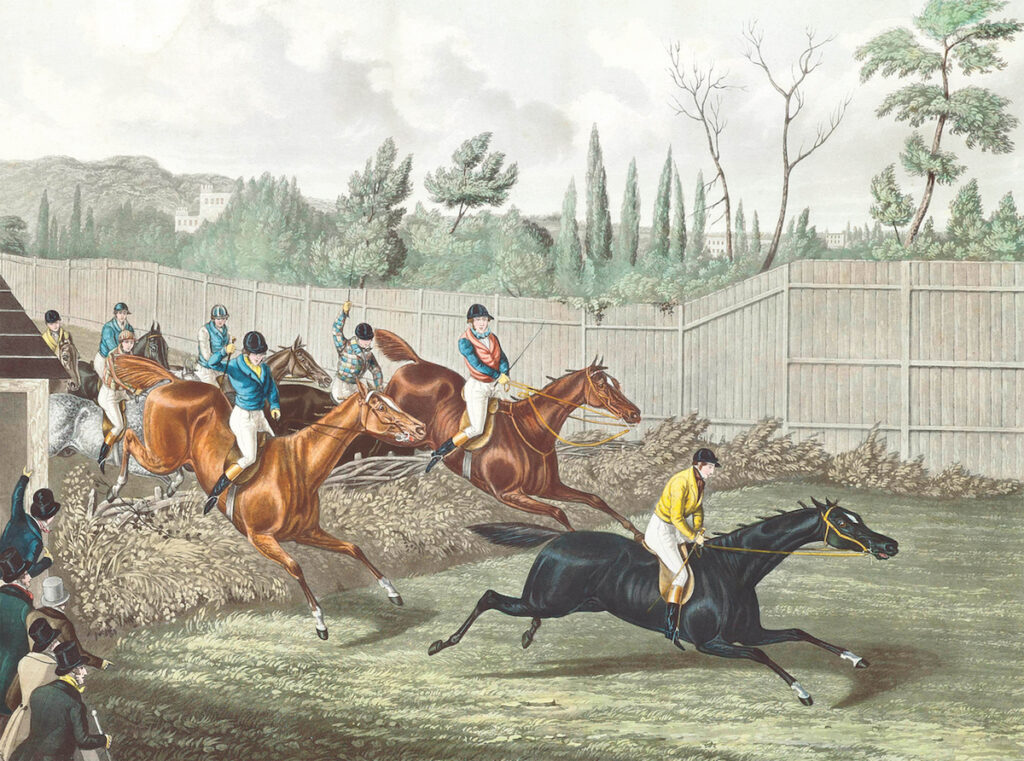
The Ladbroke family, owners of the land, were planning to develop the area during a building boom in the 1820s. The boom, however, fizzled before anything groundbreaking was accomplished. Consequently, somewhat less than 200 acres were leased to the entrepreneur John Whyte to be used for a hippodrome, with stables for about 80 horses. In May 1837, “The Times” described the soon-to-be-opened hippodrome as a facility for “pursuing any sort of equestrian exercise.”
In the centre of the ground is a hill appropriated to pedestrians, on which about 30,000 persons may stand; this is parted off by a circular railing, that they may enjoy the view of the sports and exercises around them, without running any risk of a contact with the horses. Without this railing is a broad circle for gentlemen and ladies who ride on horseback, either for private exercise or for the sake of witnessing the sports in the outer circles. The next circle is a race-course, and beyond that is a further circle for the purpose of a steeple chase, fitted with all the necessary obstacles of hedges and ditches, that the lovers of this hazardous diversion may enjoy those risks which are its peculiar characteristics.
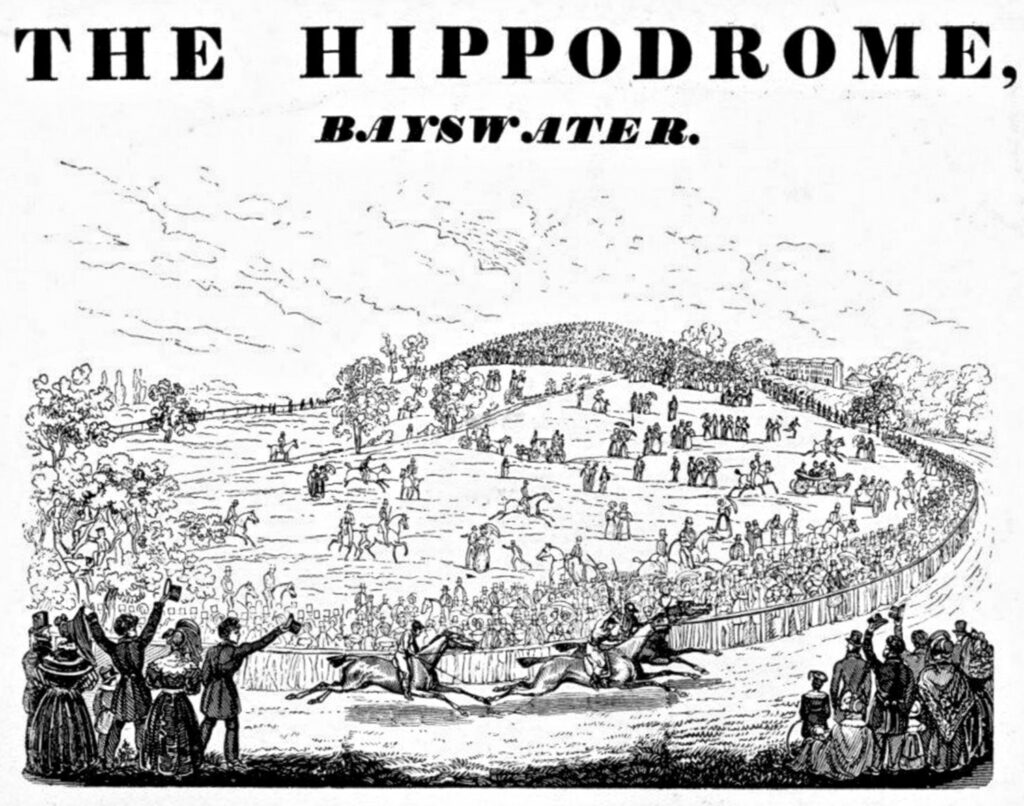
The hippodrome opened on June 3, with staggered prices for admission: a four-wheeled carriage, 5 shillings; a two-wheeled carriage, 3 shillings; horsemen, 2 shillings 6 pence; and pedestrians, 1 shilling. The attendance was so large that the start of the first race was postponed by nearly an hour to allow time for everyone to enter the grounds. Estimates ranged from 20 to 30 thousand, including a large representation from the nobility and two to three thousand spectators on horseback. An abundance of carriages of every description made a jam of traffic. There were two flat races and a steeplechase of two miles with eight obstacles. Between races, spectators could charge their horses over the hurdles.
Two complaints arose from the first meeting. The first was that a large number of those on horseback breeched the barrier enclosing the area reserved for pedestrians and mingled among them, causing concern and anxiety. It appears that this encroachment was easily remedied and did not occur at future meets.
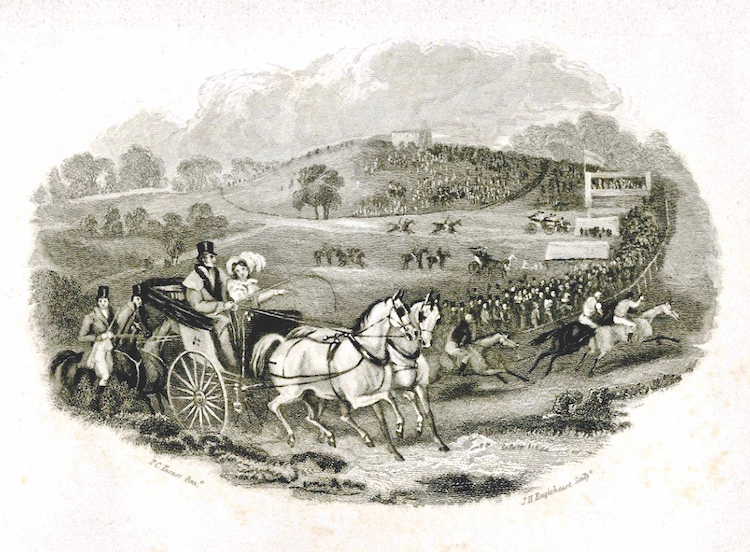
The second complaint was ongoing and arose from a multitude of the citizens of Kensington, of which Notting Hill was a part. Mr. Whyte had erected a high fence around the hippodrome, blocking the view from outside as well as blocking a path that had been a public right-of-way known as “Cut Throat Lane.” The locals were outraged and demanded open access. It became a cause célèbre for those who wished to ban racing from London pitted against those who believed that the hippodrome was the best thing to have been brought into the metropolis. The dispute made its way to Parliament under the name of the Notting Hill Enclosure Bill, where, after being batted about for several sessions, eventually died from lack of attention.
In an effort to liberate their path, the locals sawed and axed their way through the fencing on numerous occasions. Other than general annoyance at their gaining free entry, there were two distinct impressions of the character of the intruders. One faction observed that they were mannered and, other than a few miscreants, did not cause much of a disturbance. The other point of view saw only miscreants. A contributor to The Times described the intruders as “all the idle and outcast population of the neighborhood, and all the dirty and dissolute vagabonds of London … by relying on their numbers, they spread themselves over the whole of the ground, defiling the atmosphere as they go; and carrying into the neighborhood of the stands and carriages, where the ladies are most assembled, a coarseness and obscenity of language as repulsive to every feeling of manhood as to every sense of common decency.”
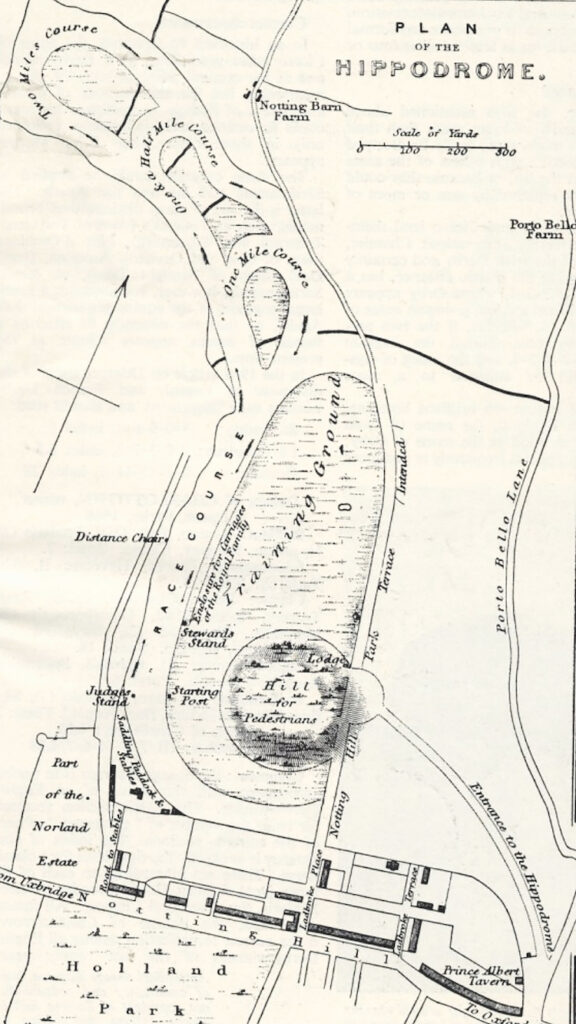
The number of races per meeting increased and stakes, plates and cups were added: The West Kent and East Surrey Stag Hounds Stakes, The Coronation Cup (Queen Victoria), The Olympic Stakes, The Metropolitan Stakes. In addition, there was a Farmer’s and Hunter’s Cup, “for horses bona fide property of farmers (and to have been in their possession two months before running) holding and farming at least eighty acres of land, hunted over by any established pack of hounds whose kennel is within thirty miles of London.” There was a further stipulation: that the horse be ridden by farmers, farmer’s sons, gentlemen or tradesmen, but not hired servants or any person that has ridden for hire.
During its short life span, the racecourse was known by several names, with Hippodrome prefaced by either Notting Hill, Kensington, or Bayswater (the district bordering Notting Hill to the east). When the last race was run in 1841, it was known as Victoria Park. The venue was ultimately brought down, not by the controversy over neighborhood rights, but by the soil (if it could be called that) which was composed of a heavy, clinging clay, which made racing there unpopular when the ground was wet. It also proved to be unsatisfactory for those who wished to ride or exercise their horses over the acreage.
After it closed and the land began to be developed, it eventually became the setting for “Notting Hill” the popular movie starring Hugh Grant and Julia Roberts. The racecourse is remembered by two streets: Hippodrome Place and Hippodrome Mews – they are very close by the once infamous Pottery Lane, which is now quite lovely. ML
This article first appeared in the March 2020 issue of Middleburg Life.


